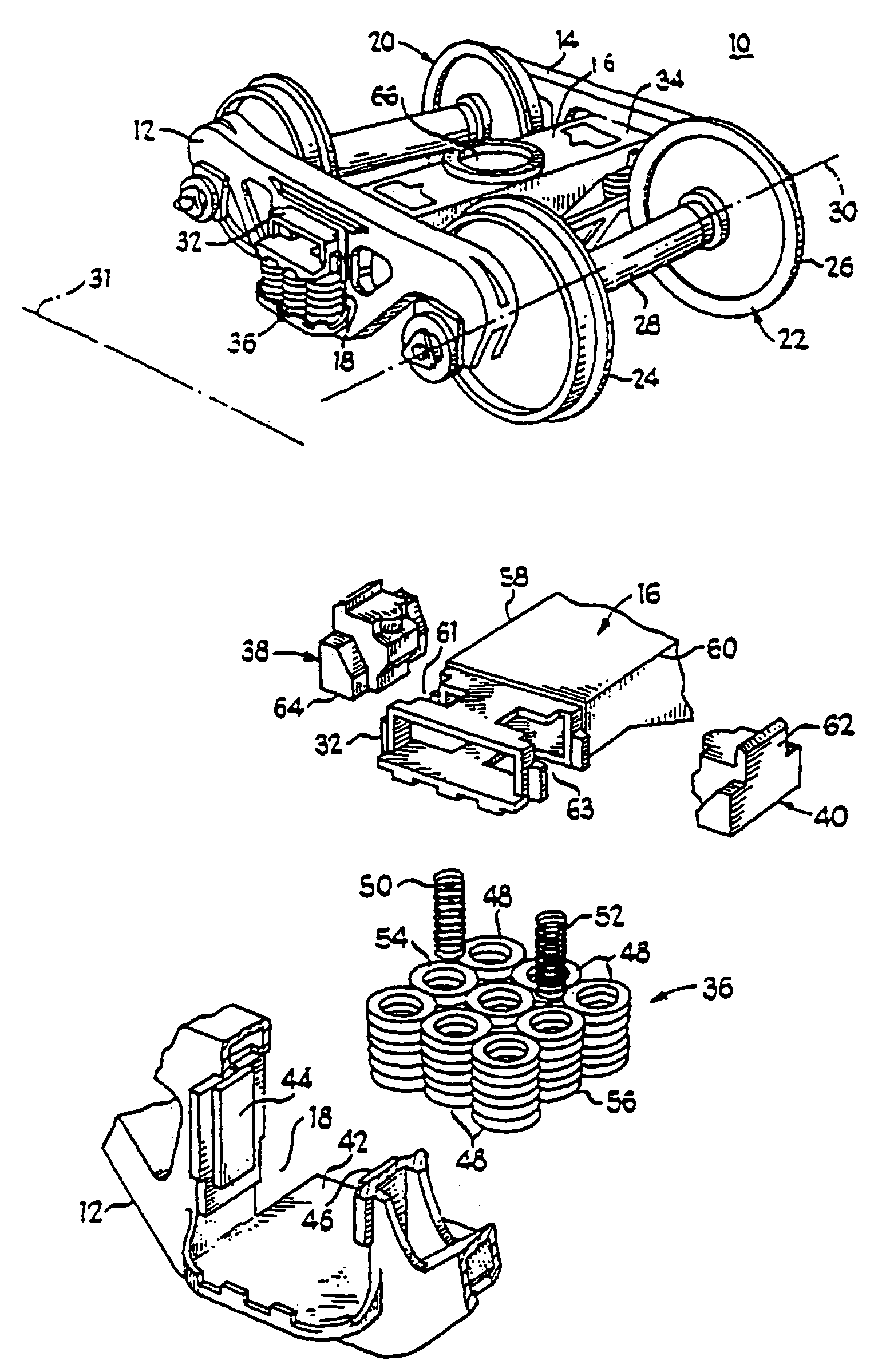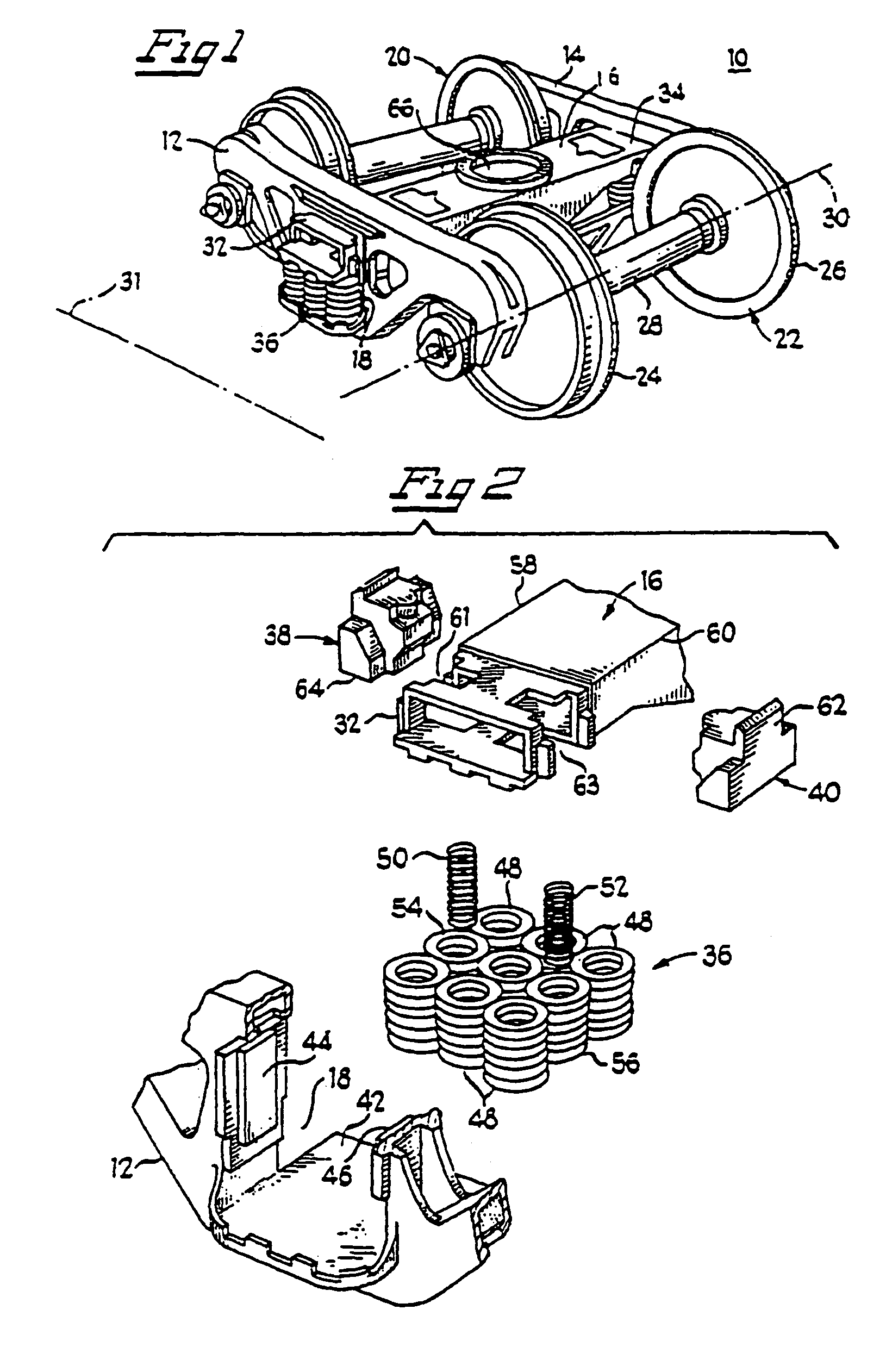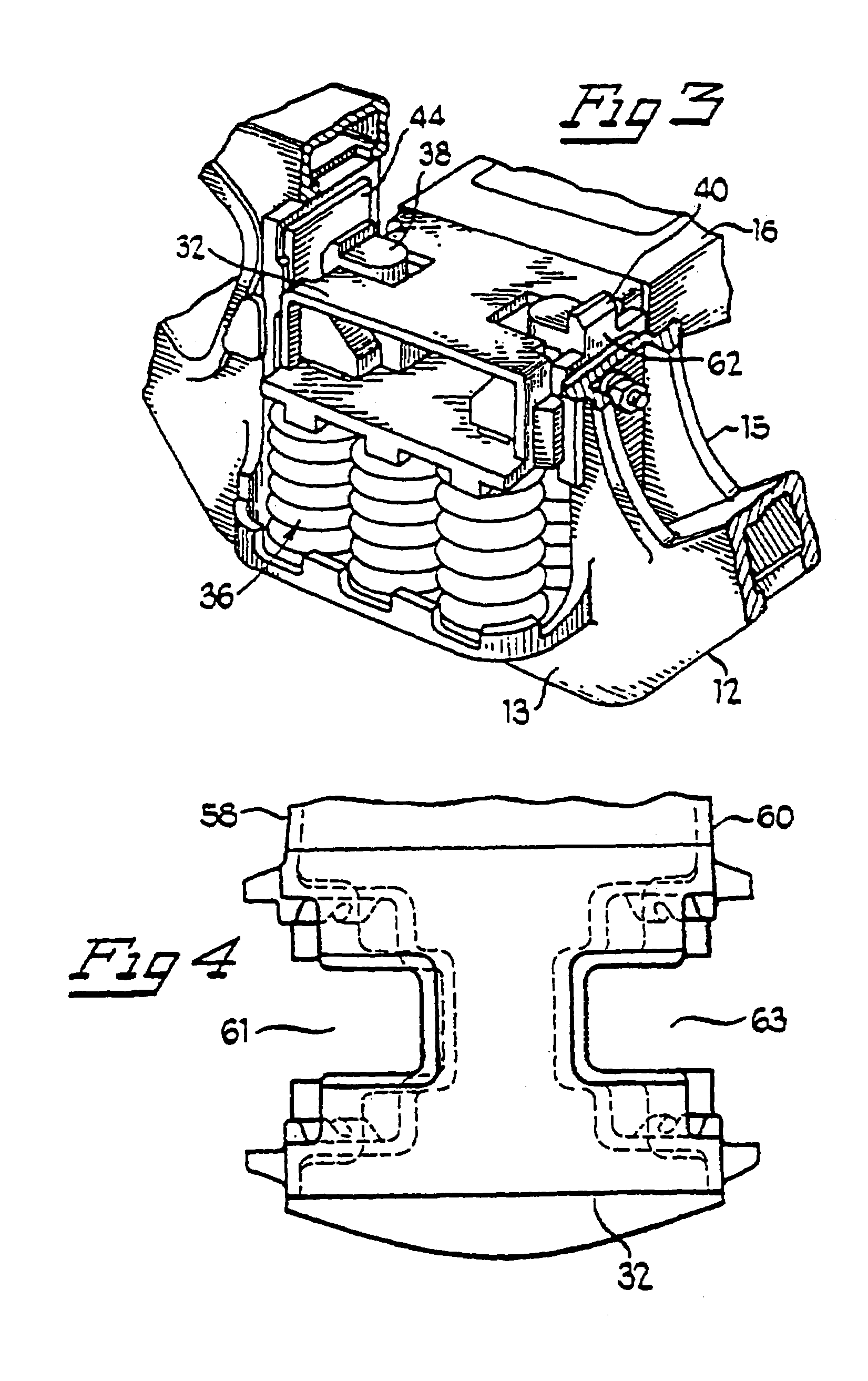Railway truck suspension design
- Summary
- Abstract
- Description
- Claims
- Application Information
AI Technical Summary
Benefits of technology
Problems solved by technology
Method used
Image
Examples
Embodiment Construction
[0076]An exemplary railcar wheel truck assembly 10, as shown in FIG. 1, has a first sideframe 12 and a second sideframe 14, which are arranged in parallel alignment. Transverse bolster 16 couples first and second sideframes 12 and 14 generally at their respective spring windows 18, which are about at the longitudinal midpoint of first and second sideframes 12, 14. First axle and wheel set 20 and second axle and wheel set 22 are positioned at the opposed ends of aligned sideframes 12 and 14. Each of first and second axle and wheel set 20, 22 has an axle axis 30 generally transverse to the longitudinal axis 31 of first and second sideframes 12, 14 and about parallel to bolster 16. Each of first and second wheel sets 20, 22 include wheels 24 and 26 and axle 28 with axle axis 30.
[0077]Bolster 16 has first end 32 and second end 34, which respectively extend through windows 18 of first and second sideframes 12 and 14 in FIG. 1. Window 18, bolster end 32, spring group 36, first friction sh...
PUM
 Login to View More
Login to View More Abstract
Description
Claims
Application Information
 Login to View More
Login to View More - R&D
- Intellectual Property
- Life Sciences
- Materials
- Tech Scout
- Unparalleled Data Quality
- Higher Quality Content
- 60% Fewer Hallucinations
Browse by: Latest US Patents, China's latest patents, Technical Efficacy Thesaurus, Application Domain, Technology Topic, Popular Technical Reports.
© 2025 PatSnap. All rights reserved.Legal|Privacy policy|Modern Slavery Act Transparency Statement|Sitemap|About US| Contact US: help@patsnap.com



